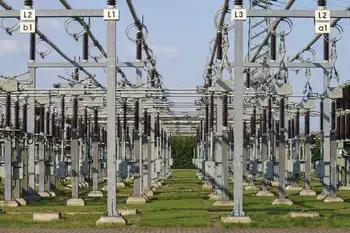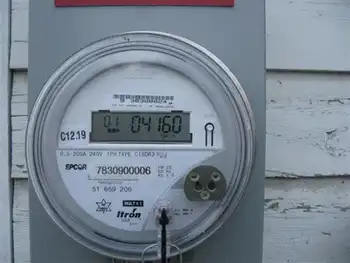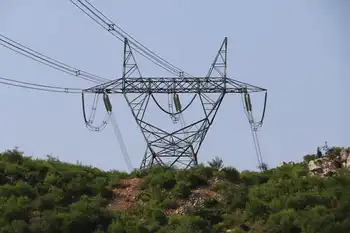How to save $1.2 trillion
By GlobeSt.com
NFPA 70e Training
Our customized live online or in‑person group training can be delivered to your staff at your location.

- Live Online
- 6 hours Instructor-led
- Group Training Available
Efforts to reduce energy usage and greenhouse gas emissions have resulted in more efficient, earth-friendly operations that have helped the environment. But much more can still be done, says a just-released report by McKinsey & Co.
According to the report, McKinsey estimates that by 2020, the United States could reduce annual non-transportation energy consumption by 23% over business-as-usual projections by utilizing a number of energy saving measures that could save 9.1 quadrillion BTUs of end-use energy, saving $1.2 trillion.
The reduction in energy use would also result in the abatement of 1.1 gigatons of greenhouse gas emissions annually, the equivalent of taking the entire U.S. fleet of passenger vehicles and light trucks off the roads. Yet a coordinated national effort has yet to be made.
"How is it that so many energy-saving opportunities worth more than $130 billion annually can go unrealized, despite decades of public awareness campaigns, federal and state programs, and targeted action by individual companies, nongovernmental organizations and private individuals?" says the new report, "Unlocking Energy Efficiency in the US Economy."
More than a year in the making, the new study arose from lingering questions from McKinseyÂ’s 2007 focus on greenhouse gases. McKinseyÂ’s team conducted hundreds of interviews with private companies, consultants, government agencies and environmental NGOs to examine the potential impact of greater efficiency in non-transportation uses of energy.
Unlike other studies, McKinsey noted, the firm did not focus on technology. Nor did it assess the impact of conservation measures on GDP, or resource prices.
The firm modeled more than 650 technologies and analyzed over 20,000 micro-segments of energy consumption, identifying 14 addressable clusters of efficiency potential.
Sponsoring organizations included: Austin Energy, Department of Energy — Office of Electricity Delivery and Energy Reliability; Office of Energy Efficiency and Renewable Energy — DTE Energy, Energy Foundation, Environmental Protection Agency, Exelon Corporation, Natural Resources Defense Council, PG&E Corp., Sempra Energy, Sea Change Foundation, Southern Co. and the US Green Building Council.
McKinsey focused its analysis on identifying what it calls an NPV-positive potential for energy efficiency, comprising direct energy, operating and maintenance cost savings over equipmentÂ’s useful life, net of costs. The analysis used six components: baseline consumption; stock and flow methodology; NPV-positive selection criteria; technology characteristics; bursting of data into micro-segments and reaggregation of data into addressable clusters.
The firm developed a series of "business-as-usual" choices of end-use technology through 2020 from the Energy Information AdministrationÂ’s National Energy Modeling system and "Annual Energy Outlook 2008" as bases. That baseline projects that 39.9 quadrillion BTUs of energy would be consumed in 2020, with 87% of the efficiency potential existing in buildings, comprising 2,010 trillion end-use BTUs.
Adding in 60 demographic and usages attributed, McKinsey created approximately 20,000 consumption micro-segments drawn from energy consumption surveys, census data and other sources into clusters to analyze potential savings.
"Our methodology is based on detailed examination of the economics of efficiency potential and the barriers to [the] capture of it," said the reportÂ’s Executive Summary.
The $1.2-trillion value of energy saved was calculated by factoring in the cost of generation, the average generation price of existing assets, the industrial retail rate, the customer [specific] retail rates, the price of avoided new construction, and avoided carbon-free new construction. Such savings are far greater than the $520 billion the firm estimates would be needed for upfront investment in efficiency measures.
Progress hasnÂ’t been made, the report acknowledges. Since 1980, energy consumption per unit of commercial floor space has dropped 21%, McKinsey notes.
"As impressive as the gains have been, however, an even greater potential remains due to multiple and persistent barriers present at both the individual opportunity level and overall system level," the summary says.
Benefits accrue over a period of time, while the investment is made early. In addition, efficiency gains take place one building at a time in multiple ways, diminishing its importance at any given stage. And itÂ’s hard to measure something that is not spent.
"Our research suggests that unlocking the full potential of any given opportunity requires addressing all barriers in a holistic rather than piecemeal fashion," the summary said.
Getting past structural, behavioral and availability barriers requires educating end users about energy-saving opportunities, offering incentives and in some cases, mandating efficiency through codes and standards, the report says. Private companies may be able to take care of many of the problems and act as a one-stop shop.
McKinsey estimates that investments of $50 billion per year, four to five times 2008 levels, over a decade would be required to achieve full savings. A key is collaboration among utilities, regulating agencies, consumers and other stakeholders. Developing new technology also will be important, but less so in the short term.
"Energy efficiency should be elevated to a national priority," said Kenneth J. Ostrowski, a senior partner at McKinsey in a press release. "The potential to reduce the energy we waste is compelling. However, to unlock the full potential, we need a coordinated national and regional strategy to overcome barriers and scale up the deployment of existing energy efficiency technologies."
Barriers also vary by type in the commercial sector, which includes education facilities, office buildings, assembly, retail and services facilities, warehouses, lodging, healthcare and other buildings. For existing private buildings, barriers include upfront capital constraints, payback periods and lack of information. Government buildings share capital and information shortages, but also face regulatory challenges. New private buildings need incentives to construct efficient buildings, and require more effective installation and better commissioning, the report says.
But if these concerns are addressed the savings potentials for just this sector are huge: existing private buildings could save 810 trillion BTUs in 2020. Achieving this would require an investment of $73 billion, resulting in present-value savings of $104 billion, McKinsey estimates. A number of strategies could be employed.
"Local, state or federal governments could require private buildings to meet an efficiency benchmark at point of sale, major retrofit or a specified time interval," the report said.
Voluntary standards also are a possibility as owners see rent and valuation premiums over non-energy efficient buildings. Public/private partnerships and monetary incentives from government and non-government agencies such as tax credits or deductions also are a possibility. The US government already offers a tax deduction of $1.80 per square foot for new or renovated commercial buildings that are 50% more efficient than ASHRAEÂ’s 90.1-2001 standard.
"Providing tiered incentives — a greater percent of initial investment for deeper retrofits — would help make the economics of deeper retrofits more attractive to building owners," the report advises.











